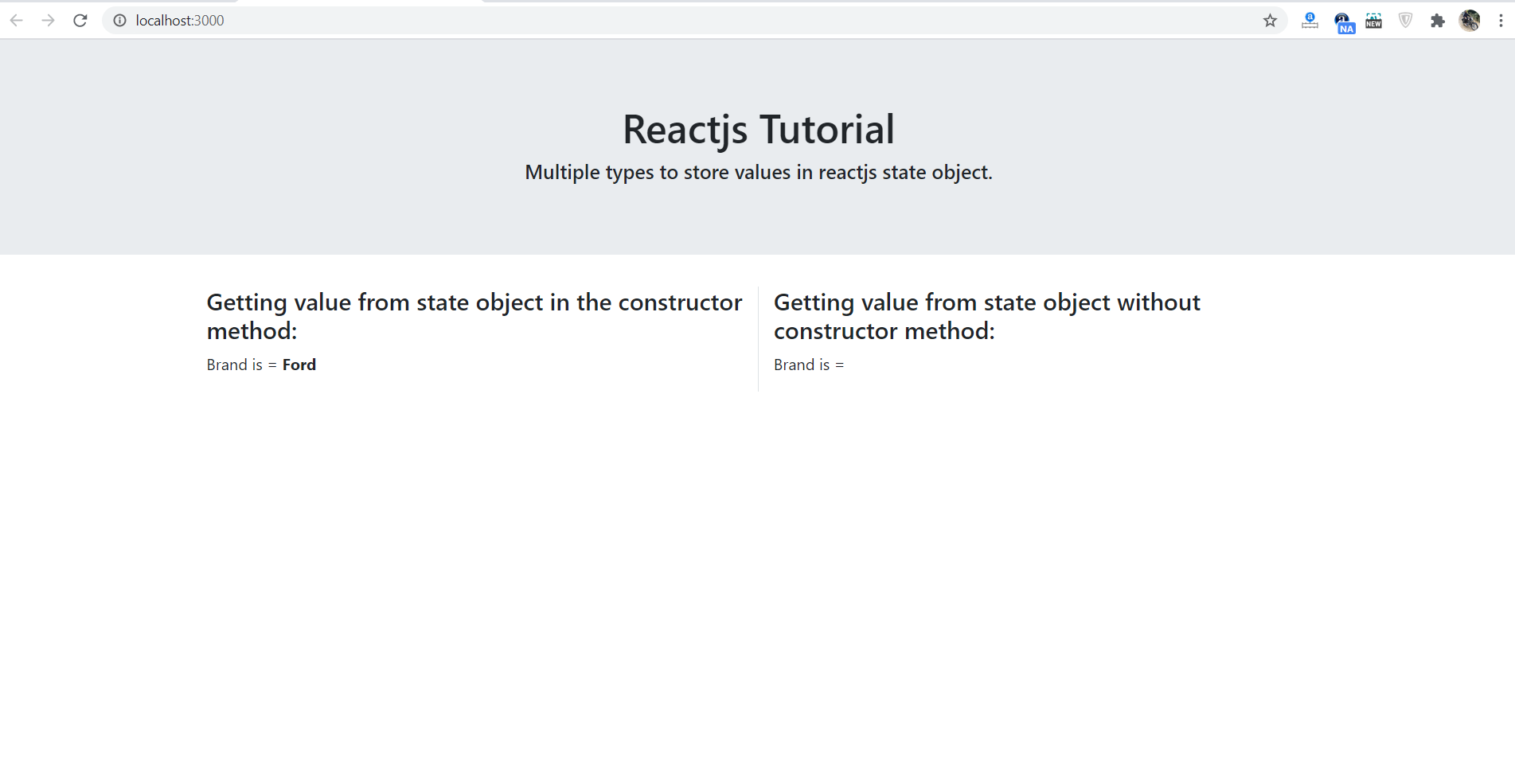Hello friends, welcome back to my blog. Today in this blog post, I am going to tell you, Multiple Types to Store Values in Reactjs State Object.
For react js new comers, please check the below link:
React js Basic Tutorials
Friends now I proceed onwards and here is the working code snippet for Multiple Types to Store Values in Reactjs State Object and please use this carefully to avoid the mistakes:
1. Firstly friends we need fresh reactjs setup and for that we need to run below commands into our terminal and also w should have latest node version installed on our system:
Guys you can skip this first step if you already have reactjs fresh setup:
npx create-react-app reactstate cd reactstate npm start // run the project
2. Now friends, we need to run below commands into our reactjs project to install bootstrap(for good looks) module:
Guys you can skip this first step if you already have these modules:
npm install bootstrap --save npm start
3. Now friends we need to add below code into our src/App.js file to get final output on web browser:
Guys here is the example with state object inside constructor method:
import React from 'react';
import 'bootstrap/dist/css/bootstrap.min.css';
class App extends React.Component
{
//Specify the state object in the constructor method:
constructor(props) {
super(props);
this.state = {brand: "Ford"};
}
render()
{
return (
<div>
<div class="jumbotron text-center">
<h1>Therichpost Tutorial</h1>
</div>
<div className="container">
<div className="row">
<div className="col-sm-12">
<p>Brand is = <b>{this.state.brand}</b></p>
</div>
</div>
</div>
</div>
) } }
export default App;
4. Friends we need to add below code into our src/App.js file to get final output on web browser:
Guys here is the example with state object without constructor method:
import React from 'react';
import 'bootstrap/dist/css/bootstrap.min.css';
class App extends React.Component
{
//Specify the state object without constructor method:
state = { brandname: "G Wagon" };
render()
{
return (
<div>
<div class="jumbotron text-center">
<h1>Therichpost Tutorial</h1>
</div>
<div className="container">
<div className="row">
<div className="col-sm-12">
<p>Brand is = <b>{this.state.brandname}</b></p>
</div>
</div>
</div>
</div>
) } }
export default App;
Now we are done friends. If you have any kind of query or suggestion or any requirement then feel free to comment below.
Note: Friends, I just tell the basic setup and things, you can change the code according to your requirements. For better understanding must watch video above.
I will appreciate that if you will tell your views for this post. Nothing matters if your views will be good or bad.
Jassa
Thanks

Leave a Reply
You must be logged in to post a comment.